
The end: From Watergate to the final weeks of the Nixon administration
Fifty years ago Thursday, Richard Nixon became the first — and, so far, the only — U.S. president to resign. How that came to happen was a long story of denial, abuse of power and a display of hubris that overshadowed the accomplishments of the Nixon administration.
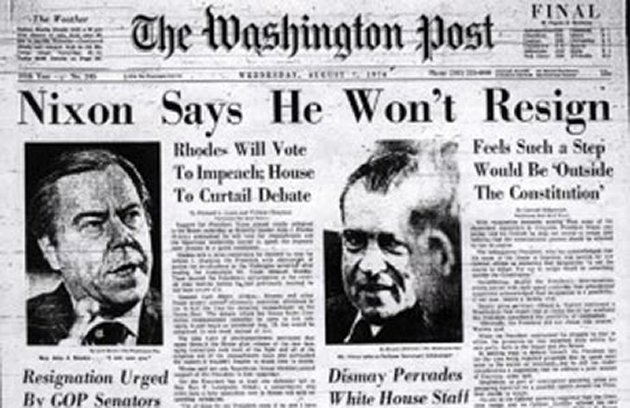
Aug. 7, 1974
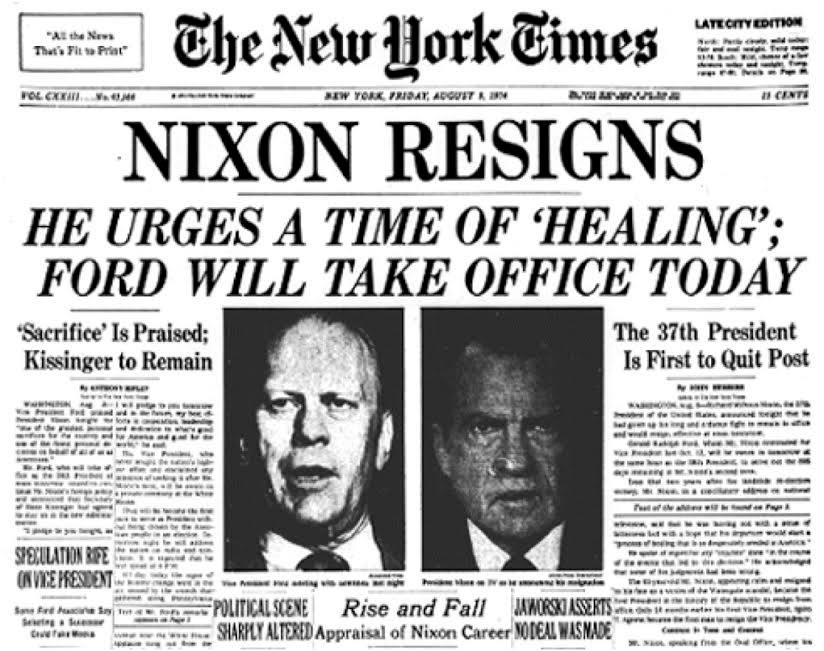
Aug. 9, 1974
A 'Burglary' at the Watergate
June 17, 1972
Five men are arrested in a break-in at the Demo- cratic National Committee headquarters at the Watergate office complex in Washington. Among the items in their possession are bugging devices, rolls of film and thousands of dollars in cash.
Although the White House denies any connection to the burglars, the men are, in fact, operatives working for the Committee to Re-elect the President.
Reporters for the Washington Post will uncover a number of ties between the burglars and the White House. They are aided by an informant who is later revealed to be associate director of the FBI.
The Scandal Unravels, Slowly at First ...
1972, June 20th
Nixon and aide H.R. Haldeman discuss the break-in at the Watergate. Later, an 18 1/2- minute gap will appear on a tape of that conversation.
Sept. 15th
Seven men, including former White House aides E. Howard Hunt and G. Gordon Liddy, are indicted in the break-in.
1973, Jan. 15th
Five of the men plead guilty to conspiracy, burglary and wire- tapping. Two more — Liddy and James McCord — stand trial later that month and are also convicted.
March 21th
White House counsel John Dean tells Nixon, “We have a cancer — within — close to the presidency, that’s growing.” Nixon discusses with him how to pay the Water- gate burglars as much as $1 million to continue the cover-up.
April 30th
Senior White House officials Haldeman and John Ehrlichman resign, as does Attorney General Richard Kleindienst. Dean — who has begun cooperating with prosecutors — is fired.
May 18th
The Senate Water- gate Commit- tee begins televised hearings. Archibald Cox is appointed special prosecutor.
June 25th
Dean testifies Nixon was involved in the cover-up soon after the break-in and that the White House had conducted political espionage for years.
Jule 16th
During his testimony before the committee, former Nixon aide Alexander Butterfield reveals that all of Nixon’s White House conversations have been taped.
Oct. 20th
Nixon offers to turn over redacted transcripts of the tapes but Cox refuses to compromise. Nixon orders Attorney General Elliot Richardson to fire Cox. Richardson refuses and resigns in protest. Acting Attorney General Robert Bork fires Cox. This becomes known as the “Saturday Night Massacre."
Nov. 21st
The White House reports two of the subpoenaed tapes are missing and one contains an 18 1/2-minute gap. Over the next few months, experts determine the tape was deliberately erased multiple times.
...And Then Goes Totally off the Rails in 1974
July 24th
The Supreme Court rules that Nixon must surrender the tapes. White House officials discuss the possibility of Nixon offering pardons to everyone in order to halt prosecutors.
July 27th
The House Judiciary Committee adopts the first of three articles of impeachment against the president.
Aug. 5th
Nixon releases transcripts of three conversations between him and Haldeman held on June 23, 1972 — six days after the break-in.
The tapes reveal Nixon obstructed justice by ordering the FBI to stop its investigation of the break-in. Other transcripts show he directed a cover-up. This becomes the “smoking gun” investigators had been searching for.
The White House issues a statement acknowledging the transcript differed from Nixon’s earlier statements. Nixon’s political support dissipates as Republicans on the Judiciary Committee who voted against impeachment announce they’ll change their votes.
Aug. 7th
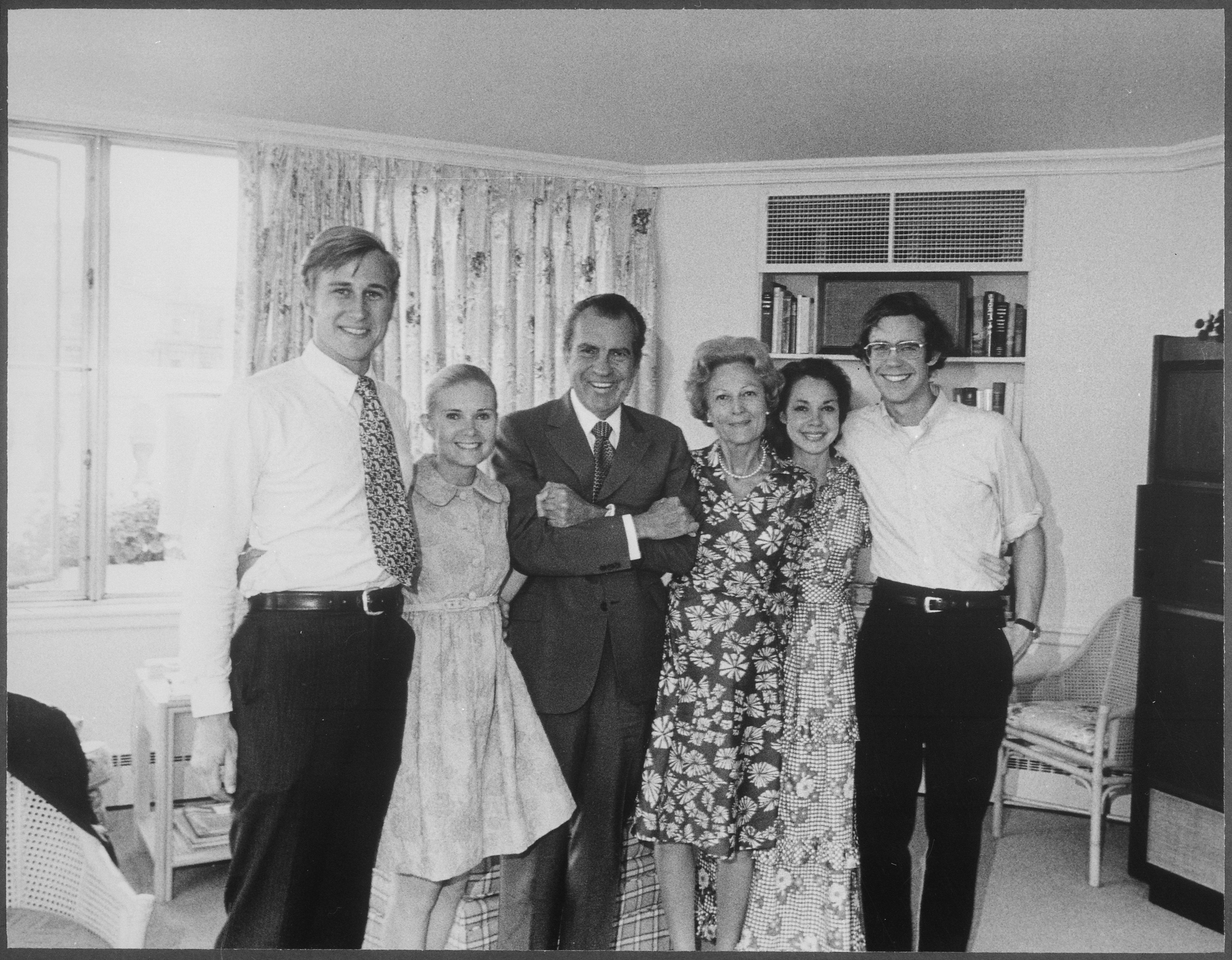
Pressure mounts for Nixon to resign. Haldeman calls the White House repeatedly seeking a pardon. Nixon has discussed the possibility of pardoning himself. After Nixon makes a joke about wishing for a pistol in his desk drawer, Chief of Staff Alexander Haig quietly orders all sleeping pills and tranquilizers removed from the White House.
His mind made up, Nixon tells his family that evening: “We’re going back to California.” His daughters begin to cry but try to smile for the official White House photographer Nixon has summoned.
Aug. 8th
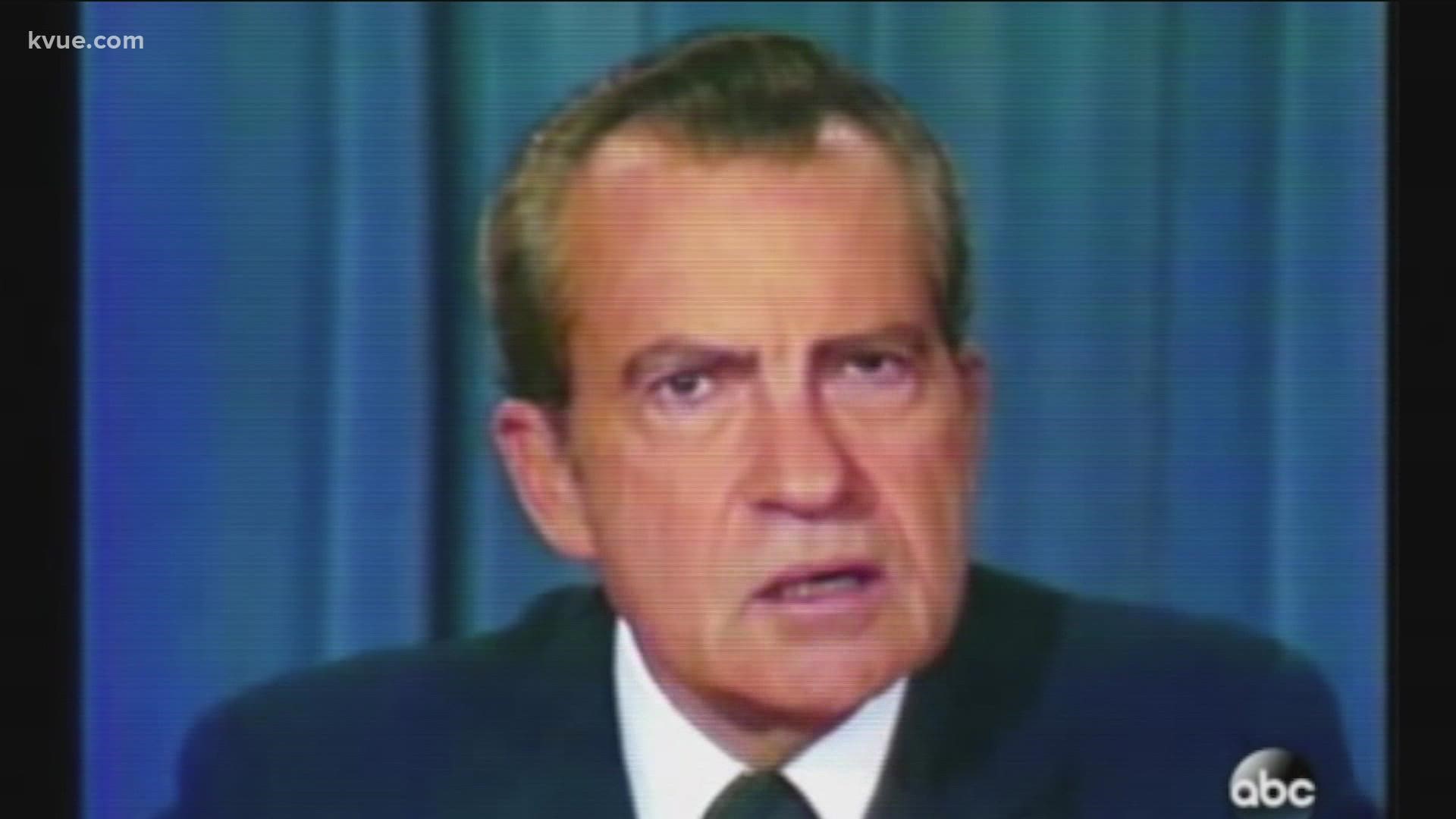
Nixon makes his good- byes to Vice President Gerald Ford and to 46 Capitol Hill supporters who meet with him in the White House Cabinet room. He tells them the country cannot operate with “a half-time president” before he breaks down in tears, ending the meeting.
An hour later, Nixon goes on national TV and announces he will “resign the presidency, effective at noon tomorrow.” He tells the nation that he had never been a quitter and that leaving office “is abhorrent to every instinct in my body.” But, as president, he would put the nation’s interests first.
Aug. 9th
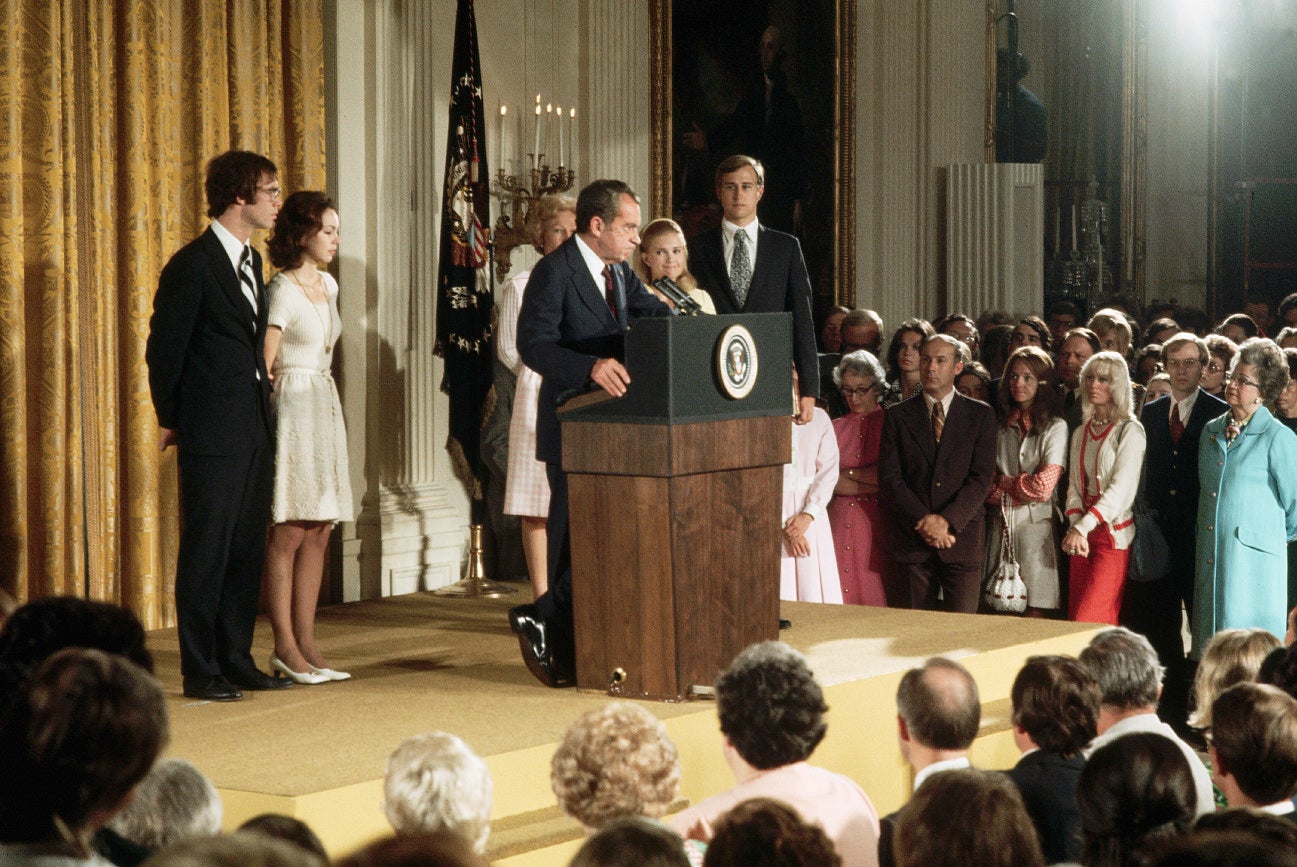
Flanked by his family, Nixon delivers a farewell speech to his staff in the East Room of the White House.
Afterward, Nixon departs via helicopter from the South Lawn — but not before flashing his signature double-V-for-victory sign at the top of the steps.
At 11:35 a.m., Secretary of State Henry Kissinger initials Nixon’s resignation letter, making it effective.
At noon, Supreme Court Chief Justice Warren Burger swears in Vice President Gerald Ford as president, also in the East Room.
Aug. 28th
Concerned by the number of questions about Nixon that came up in his first press conference, Ford asks his White House Counsel Phil Buchen to quietly look into legal precedents for presidential pardons. A number of other aides help with the legal research.
Sept. 8th
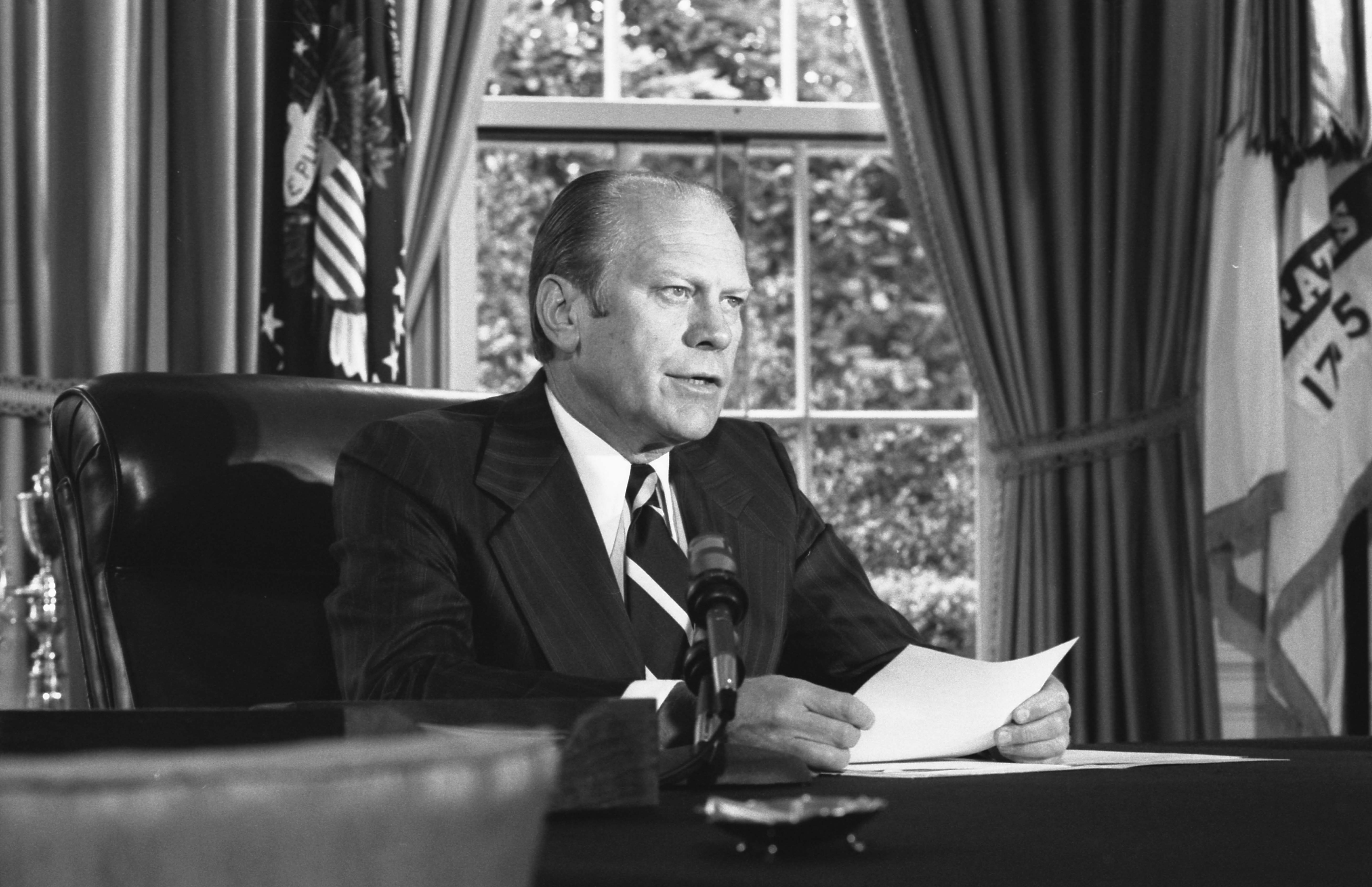
In a surprise Sunday afternoon announcement, President Ford grants a “full, free and absolute” pardon to Nixon for “all offenses against the United States.”
Ford tells the nation that Nixon’s circumstances are “a tragedy in which we all have played a part. It could go on and on and on, or someone must write the end to it. I have concluded that only I can do that. And if I can, I must.”
Many historians feel negative public reaction to the pardon cost Ford the 1976 election.